








An innovative blood donation app that motivates young people to donate regularly.
In Germany, there is an annual shortage of 2.5 million blood donations – a deficit that exists because only 3% of the population donates regularly. Young people in particular rarely or never participate in blood donations, as the topic is often not present in their daily lives. This is exactly where Pulse comes in: An app designed with targeted features to appeal primarily to young people and motivate them to donate blood regularly.
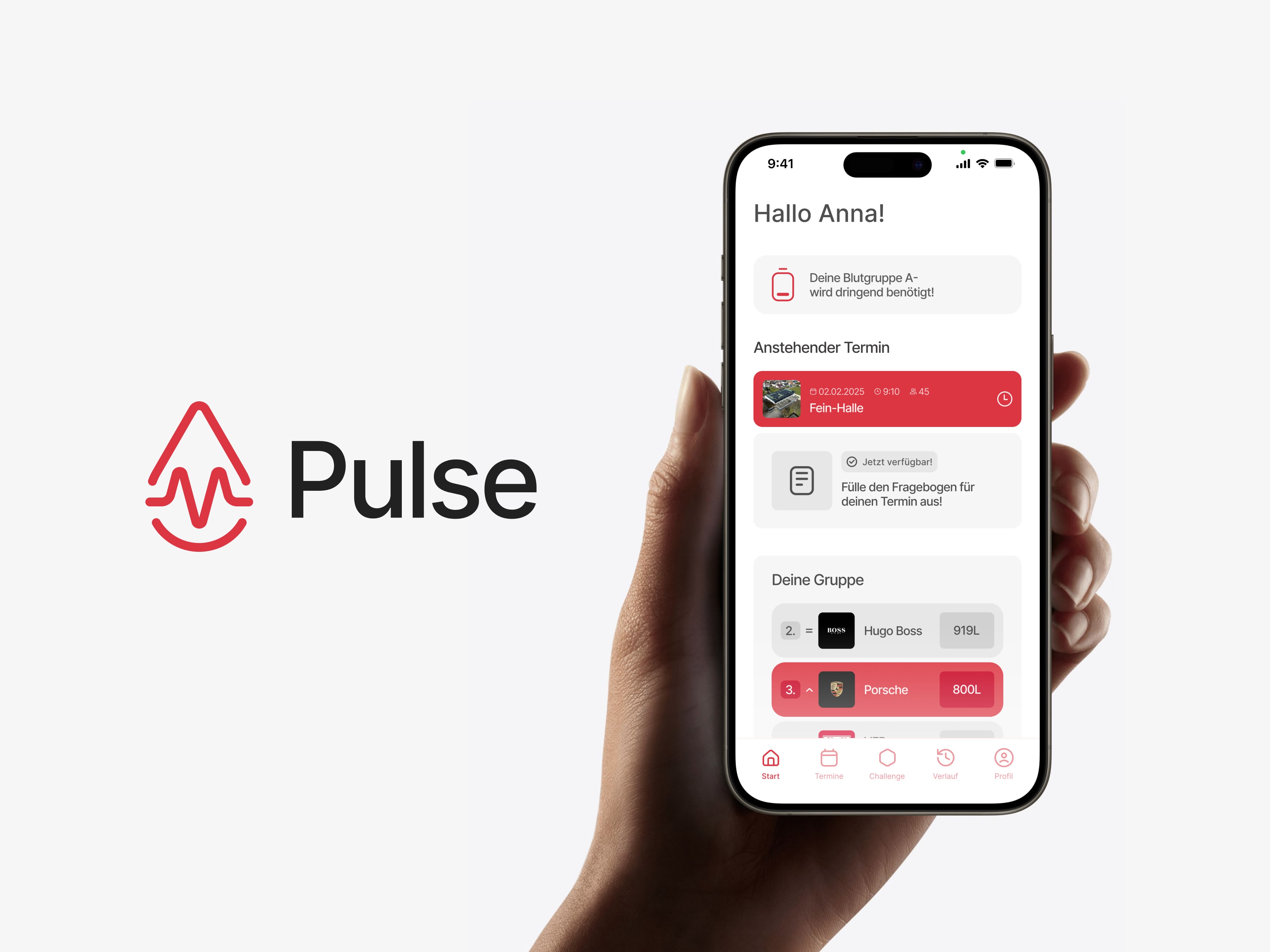
In our research phase, we used various methods to gather insights for the design process. We conducted online surveys, performed shadowing by accompanying a person during a blood donation, analyzed the German Red Cross forum, conducted interviews, and spoke with officials on-site at the German Red Cross.
The biggest barrier for young people is not a lack of interest, but rather missing information and a complicated process.
Our Value Proposition Canvas identified the key pain points of potential donors and linked them with suitable solutions. The main insight: Lack of transparency and overly complicated processes discourage young first-time donors.
Our study with over 80 participants provided valuable insights into blood donation behavior and attitudes. The data collected formed a solid foundation for the development of the Pulse concept.
Only 12% of those under 30 donate blood regularly, while the rate for those over 50 is 37%.
Lack of Knowledge — respondents do not know the basic requirements for donating blood.
There is generally a strong interest in donating blood, but the final step to actually donate is often missing.
From analyzing the DRK forum and our interviews, we identified recurring topics that concern potential donors:
"Am I allowed to donate blood if I have a pre-existing condition?"
"How long do I have to wait after getting a tattoo?"
"How long does a blood donation take in total?"
"Can I schedule an appointment to avoid waiting times?"
"When and how do I receive my blood values?"
"What do the individual readings in my results mean?"

The qualitative analysis of forum posts helped us identify important pain points in the existing donation process.
Interviews, user shadowing, and surveys led to three main user personas. Direct observations and in-depth interviews provided valuable insights into their needs.

45 years old
"I have been donating blood regularly for 25 years, because my father was saved by a donation. For me, it's a given."

25 years old
"I would like to donate blood, but I've never done it before and I'm not sure if I'm even eligible."

65 years old
"I would like to donate blood, but because of my chronic illness, I'm not allowed. I still want to help."
A detailed survey with over 80 participants of various age groups. The results clearly showed that young people under 30 donate blood significantly less often than older populations.
Accompanying three individuals during a blood donation in Schwäbisch Gmünd. This direct observation provided valuable insights into the actual hurdles and pain points of the donation process on-site.
On-site conversations with donors, staff, and organizers at a DRK blood donation event. This field research helped us understand the organizational challenges and existing processes more thoroughly.
Pulse transforms blood donation from a one-time good deed into an ongoing, community-driven experience. Our carefully designed features address the biggest hurdles in blood donation—especially for younger audiences.
Clear and organized scheduling makes finding and booking blood donation appointments a breeze. No more uncertain searching or long wait times—just a seamless process tailored precisely to your needs.
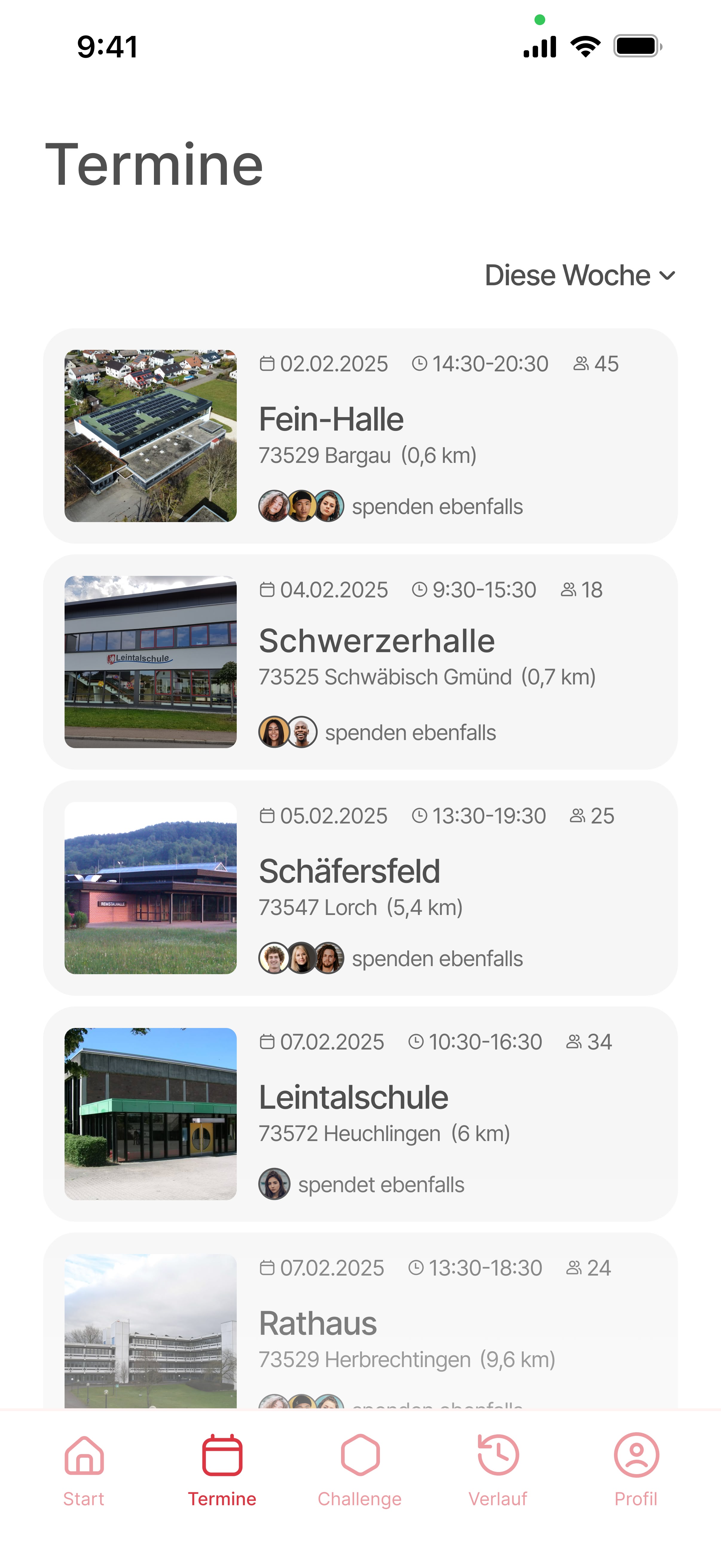
Automatically save your appointments to your calendar and receive timely reminders
With Pulse, blood donation becomes a communal experience. The Challenge feature turns a good deed into a friendly competition that boosts motivation and encourages regular donations.
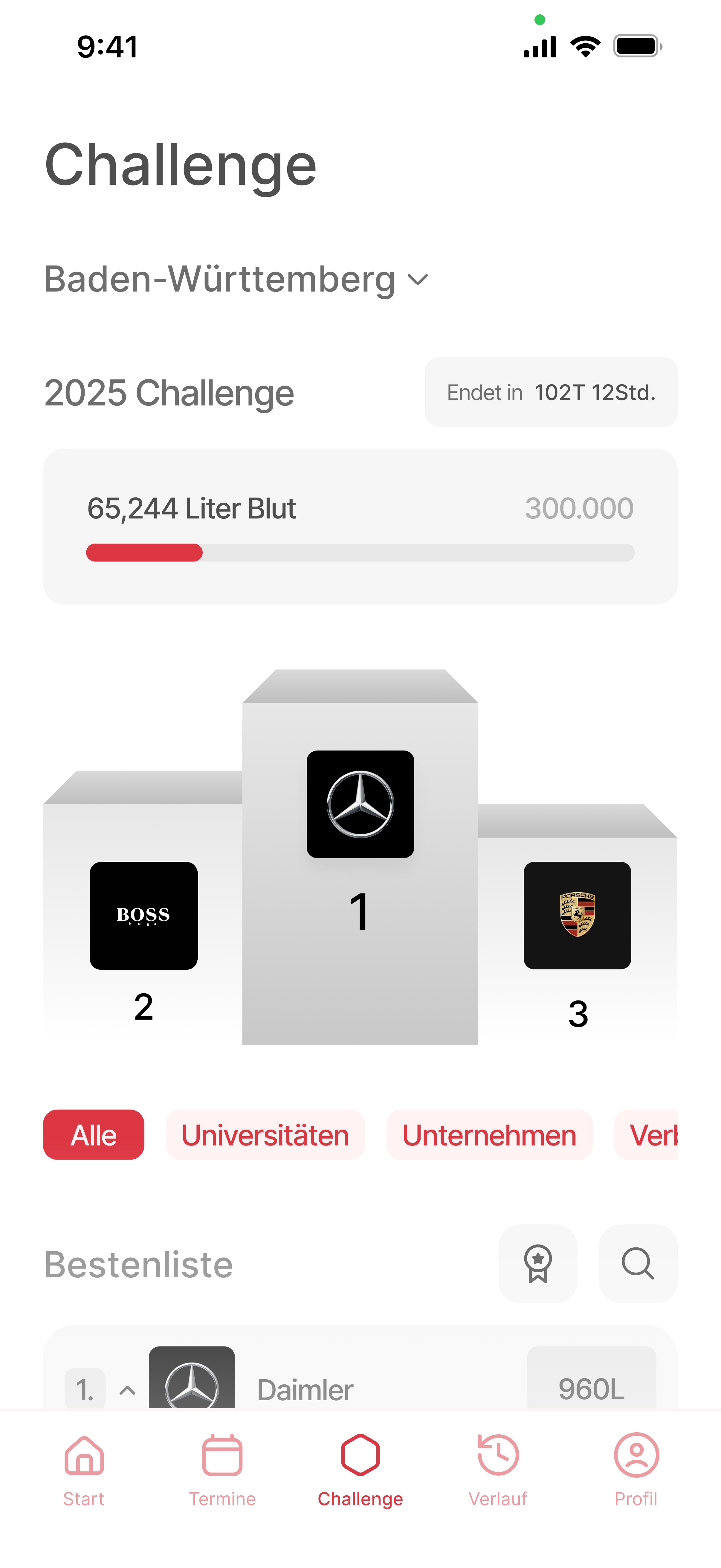
Track your team's progress in real time
Say goodbye to long waiting times and paperwork on-site. The digital questionnaire can be filled out comfortably at home, reducing waiting time by an average of 15 minutes—an enormous relief for first-time donors and busy professionals.
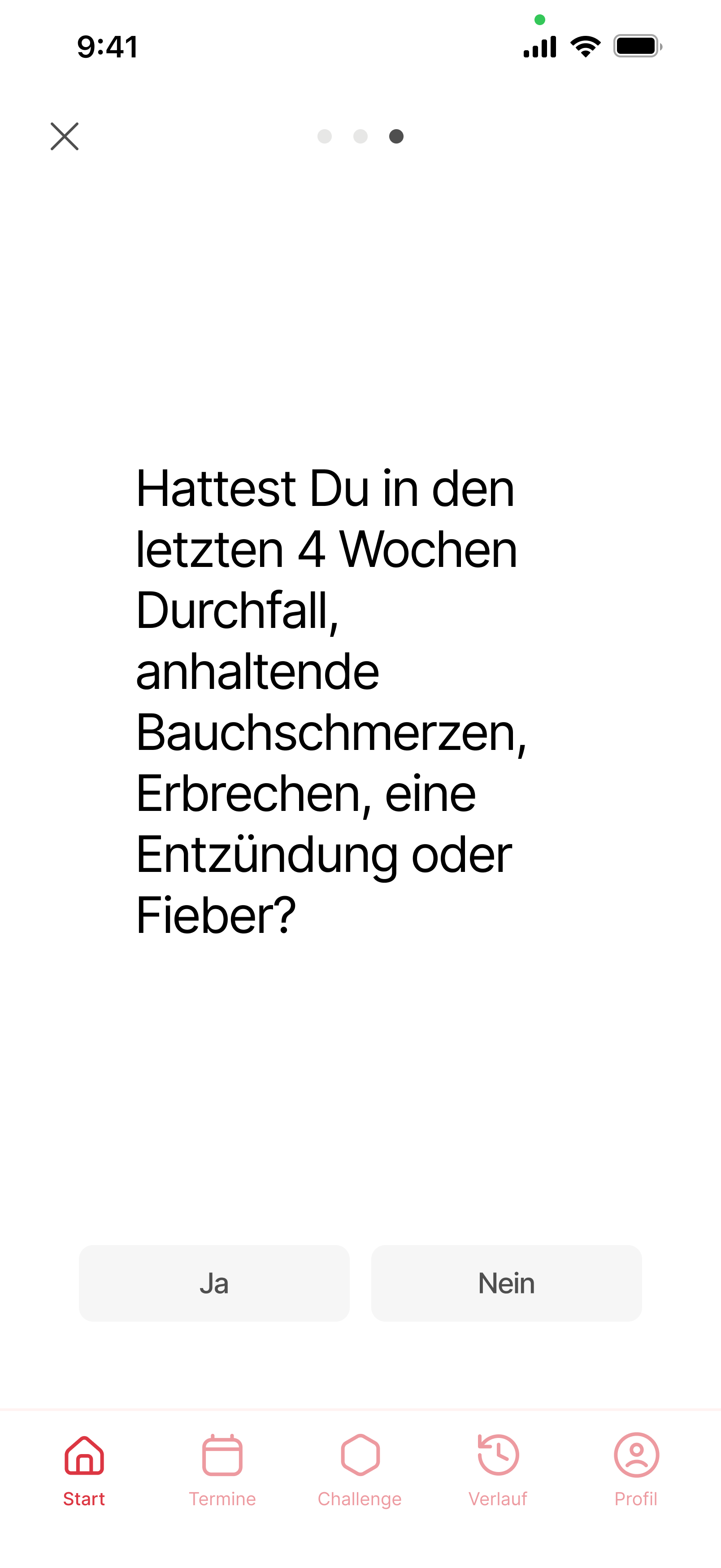
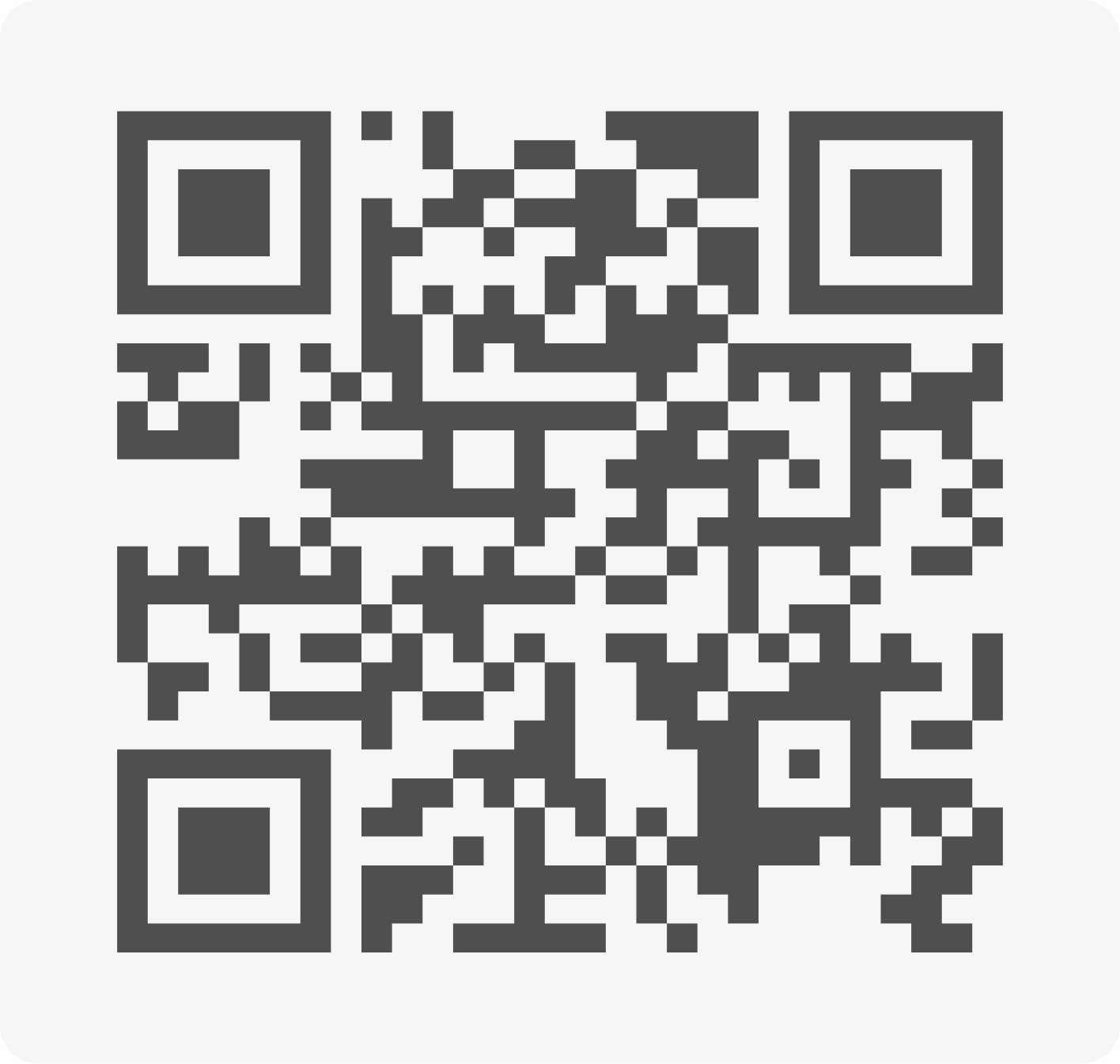
Spendi is available around the clock to answer questions and alleviate fears and uncertainties—especially valuable for first-time donors. Unlike hotlines with limited hours, Spendi is there whenever you need it.
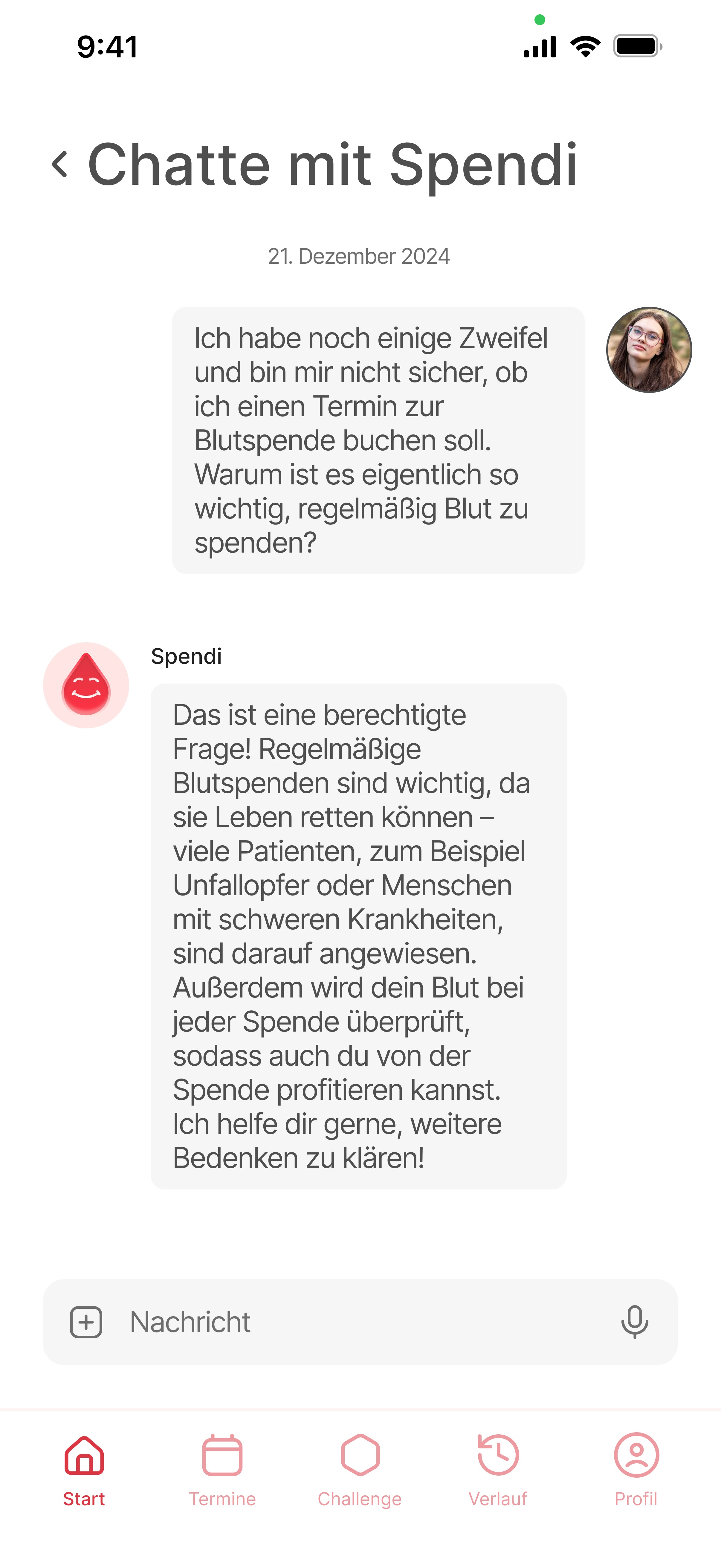
Responds to your individual concerns and questions
Your personal donation dashboard not only shows your donation history but also important health values over time. This adds real value beyond a good deed—health monitoring as an additional source of motivation.
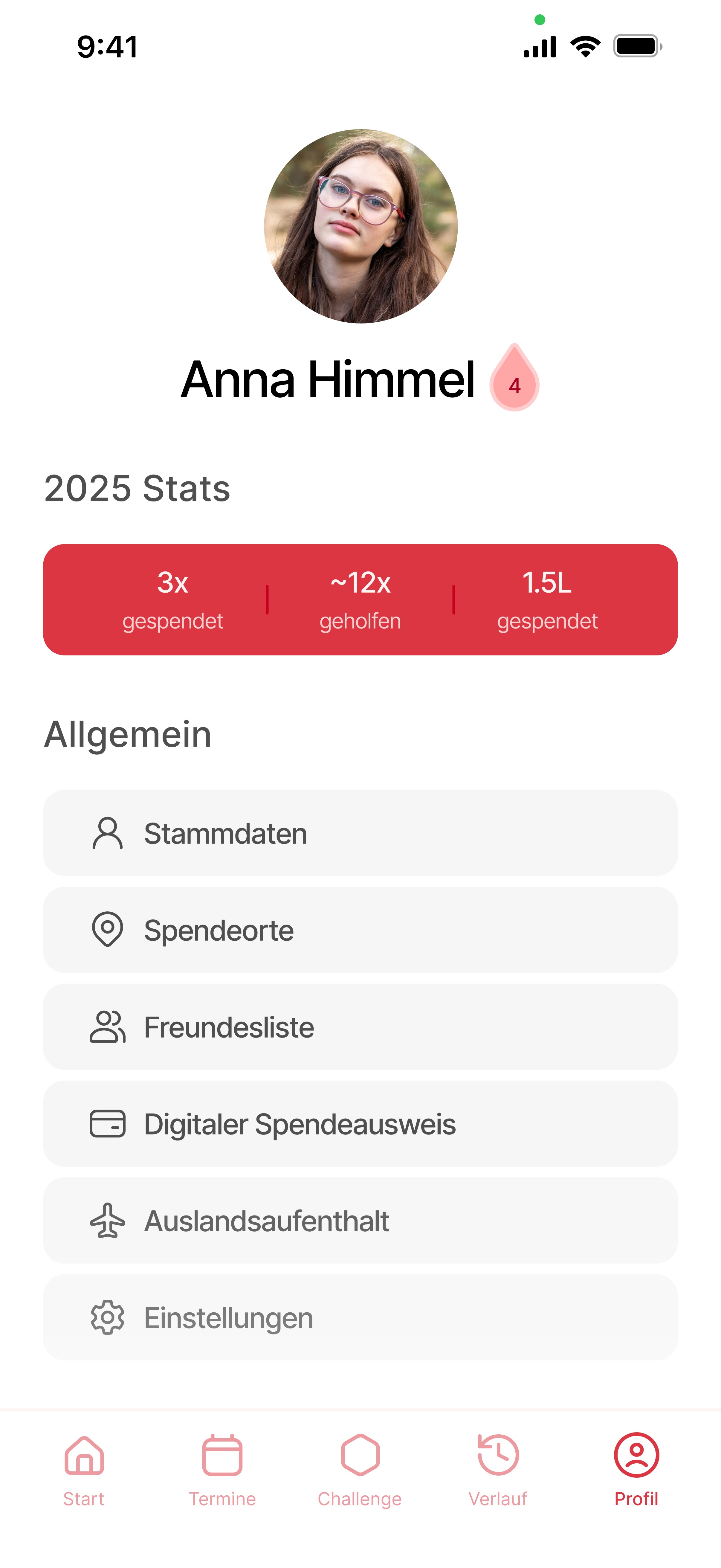
Keep an eye on essential body values such as blood pressure, hemoglobin, and iron levels
The annual recap provides emotional engagement and showcases the impact of your good deeds. See how many people you helped and the contribution you made to the community—an inspiring motivator for future donations.
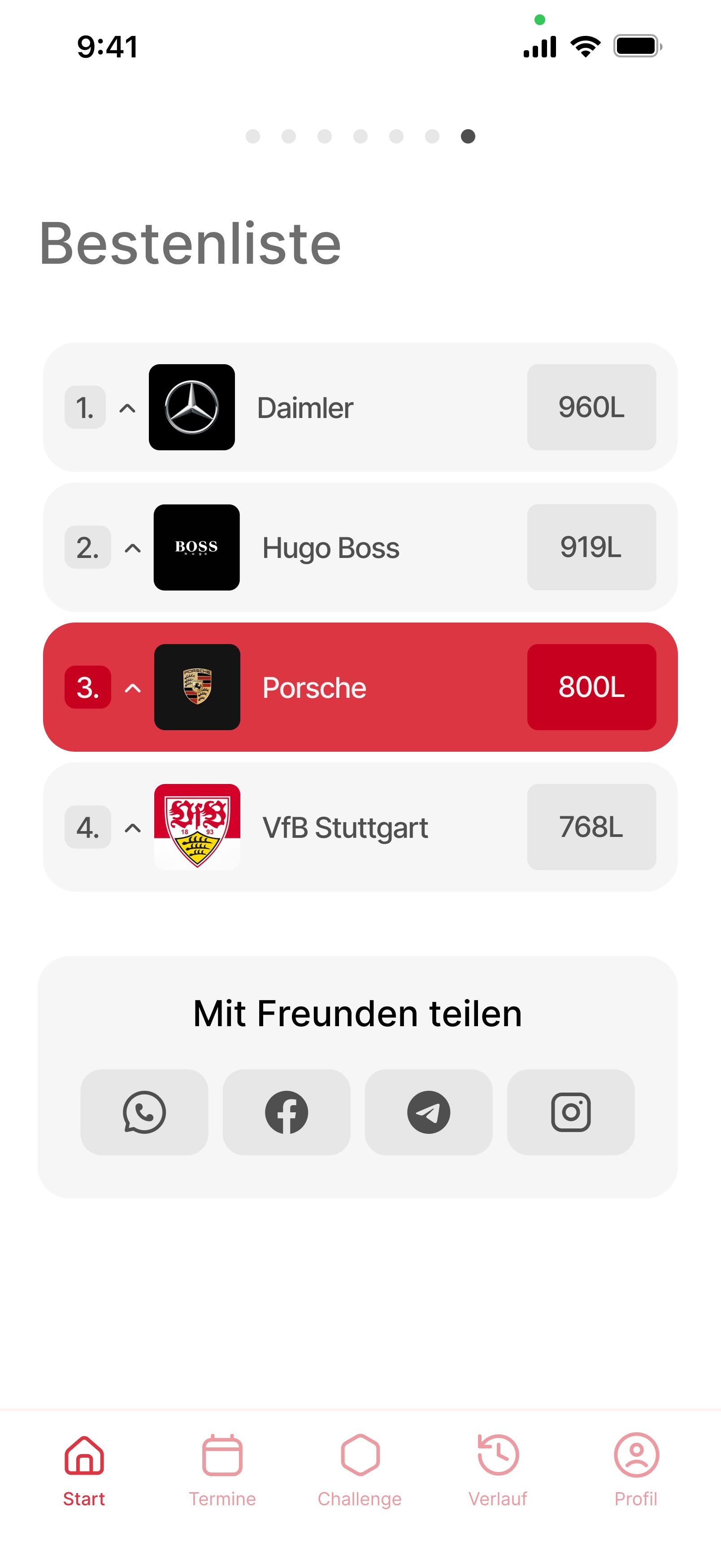
Discover which awards you've earned this year
Through a structured ideation process, we developed creative solutions to address the key challenges identified during our research phase.
From the user flow, we formulated "How Might We" questions, which were prioritized accordingly. This enabled us to tackle the most important challenges directly and focus on innovative solutions.
Young people often lack an emotional connection to the topic of blood donation, which is essential for long-term engagement.
Long wait times and complicated procedures especially discourage first-time donors and busy individuals.
A lack of knowledge about donation requirements and the actual process poses a major barrier.
Using a structured ideation process, we transformed the identified problems into concrete solution approaches. The iterative process included various creative techniques and continuous testing of hypotheses.
Rephrase the identified problems into specific design challenges.
Brainstorming sessions and creative workshops with various stakeholders.
Group and prioritize ideas based on innovativeness and feasibility.
Develop the most promising ideas into concrete feature concepts.
Create initial visualizations and test them with potential users.
To make the abstract concepts tangible, we created various sketches and wireframes. These served as the basis for early user tests and the further development of the design concept.


Throughout the design process, numerous artifacts were created to document our thought process and illustrate the evolution of the Pulse concept.




The Pulse app has been visualized for various devices and contexts. The following mockups show the final design in different application scenarios.
With Pulse, we have developed an app that has the potential to sustainably transform the blood donation landscape in Germany. By combining efficient process management, social gamification, and personalized health insights, we create genuine added value for both donors and blood donation services alike.
We addressed the challenge of motivating more young people to donate blood regularly with a design-centered approach that places the needs and pain points of our target audience at the forefront. The result is a solution that not only excels in functionality but also resonates emotionally.
Digital solutions can effectively eliminate many of the logistical and informational barriers surrounding blood donation. In particular, the digital questionnaire and the AI assistant significantly reduce uncertainties.
Transforming blood donation from an individual act to a communal experience creates additional motivational dynamics that can be crucial for long-term commitment.
Tracking health metrics provides a genuine added benefit and differentiates Pulse from other solutions. The combination of altruism with personal gain proves to be a powerful mix.